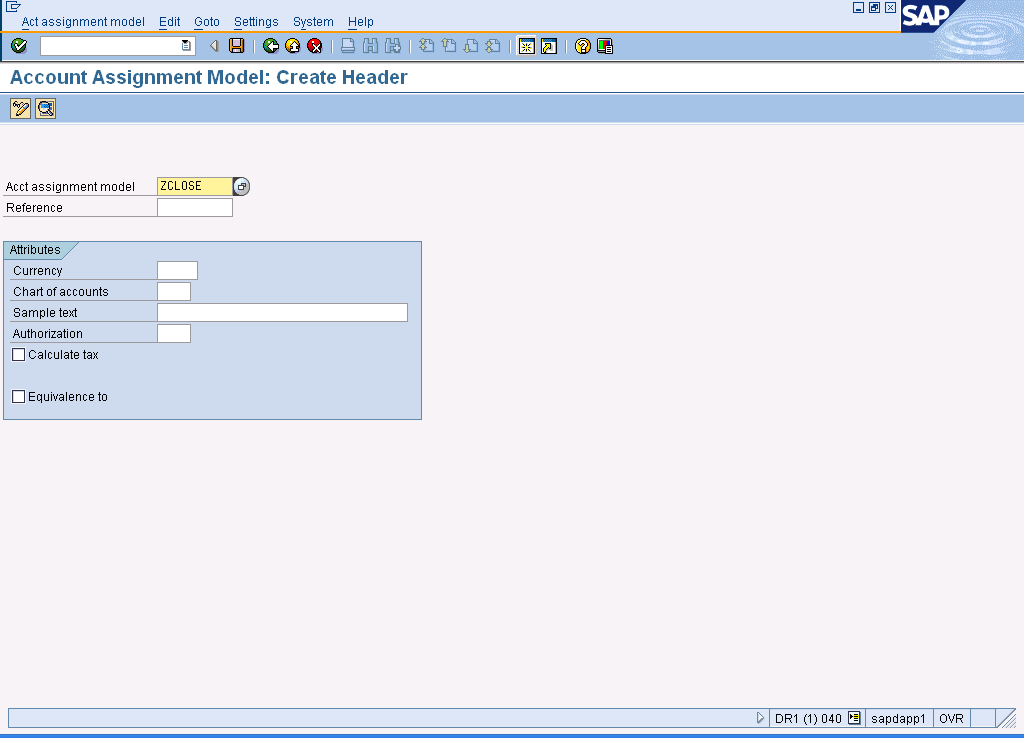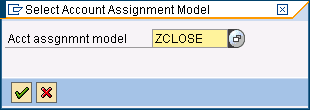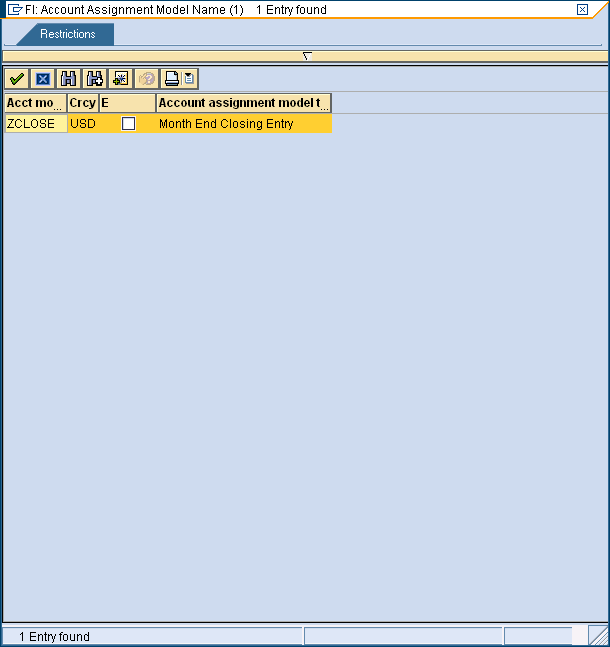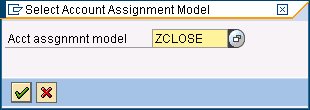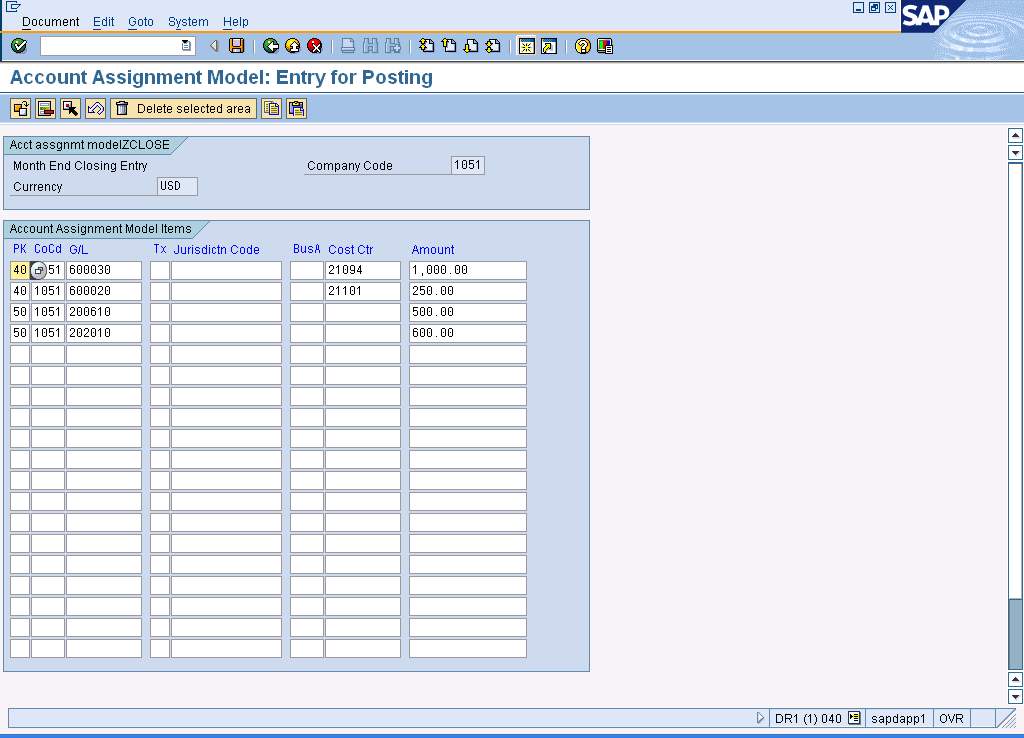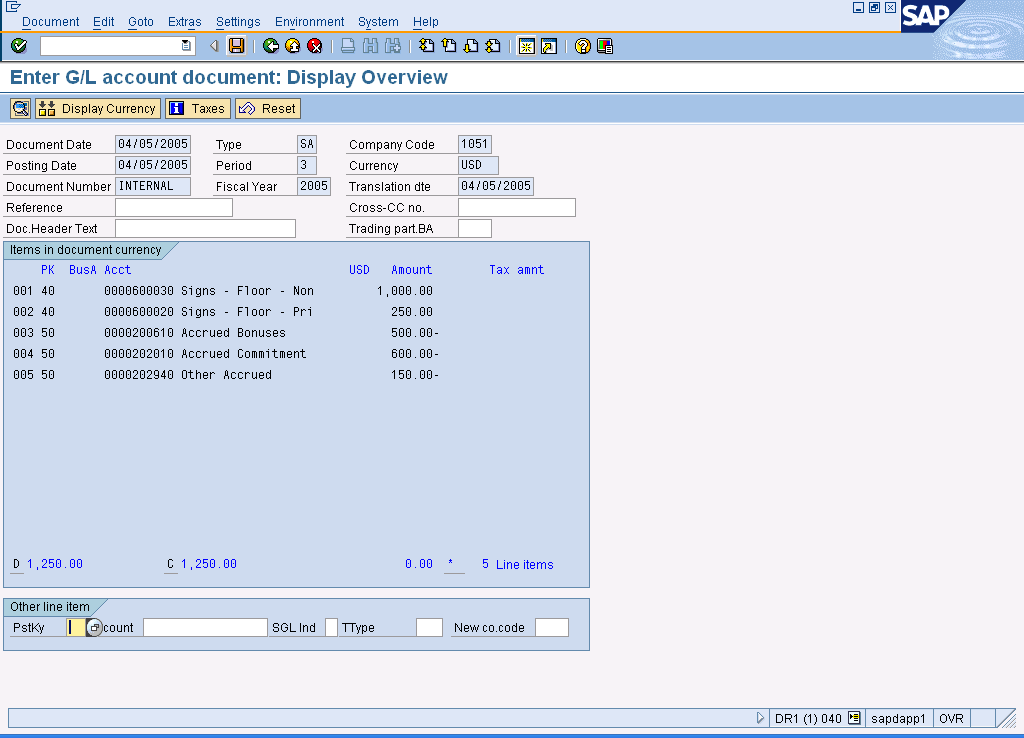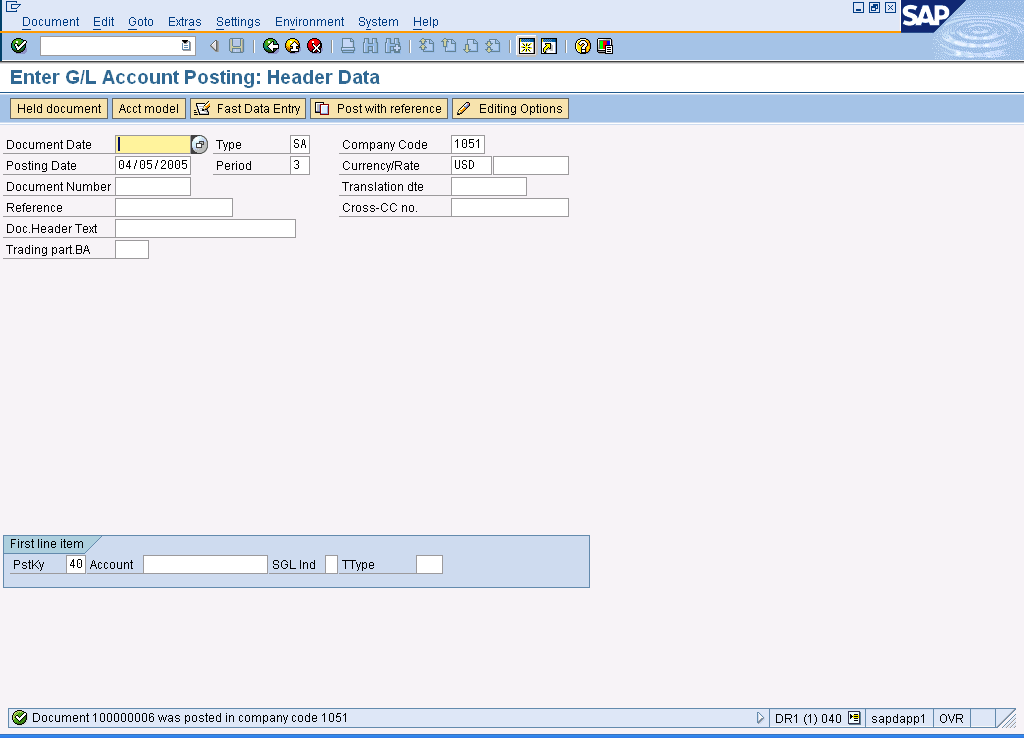FI Account Assignment Model Management- FKMT (FKMT,
F-02)
Purpose
Use this transaction to create an account assignment
model.
When To Do This
Perform this procedure when you want to create an
accounting line item template.
Prerequisites
·
You should have authorization to do so.
Menu Path
Use the following menu path to begin this transaction:
·
Select Accounting Financial
Accounting General Ledger Posting Reference Documents Account Assignment Model to go
to the Account Assignment Model: Initial Screen.
Transaction Code
Helpful Hints
None
Procedure
1. Start
the transaction using the menu path or transaction code.
Account Assignment Model:
Initial Screen
2. As required, complete/review the following fields:
|
Field Name
|
R/O/C
|
Description
|
|
Acct assignment model
|
R
|
A template used for
document creation in which default values are provided for the posting of a
business transaction. Templates may contain incomplete data and are
updateable.
 This description is free form text with a
maximum of ten characters. This description is free form text with a
maximum of ten characters.
Example: ZCLOSE
|
3. Click  to begin creating the
model by going to the Account Assignment Model:
Create Header screen.
to begin creating the
model by going to the Account Assignment Model:
Create Header screen.
Account
Assignment Model: Create Header
4. As required, complete/review the following fields:
|
Field Name
|
R/O/C
|
Description
|
|
Currency
|
R
|
Monetary unit. The
currency of the entity processing transactions.
Example: USD
|
|
Chart of accounts
|
R
|
A classification scheme
consisting of a group of general ledger (G/L) accounts. A chart of accounts
provides a framework for the recording of values, in order to ensure an
orderly rendering of accounting data.
Example: LMTD
|
|
Sample text
|
O
|
Used to document an
account assignment model. Text is not transferred to the posted document.
Example: Month
End Closing Entry
|
5. Select .
Account
Assignment Model: Change Line Items
6. As required, complete/review the following fields:
|
Field Name
|
R/O/C
|
Description
|
|
PK
|
R
|
Posting key. Two-digit
numeric key that determines the way line items are posted. This key
determines several factors including: account type, type of posting (debit or
credit), and layout of entry screens
Example: 40
|
|
CoCd
|
R
|
Independent accounting
unit; in most cases is a legal entity. You can prepare a balance sheet and
income statement for each company code. Several company codes can be set up
to manage the accounts of independent companies simultaneously.
Example: 1051
|
|
G/L
|
R
|
Description of the G/L.
Example: 600030
|
|
Cost Ctr
|
R
|
An organizational unit
within a controlling area that represents a defined location of cost
incurrence.
Example: 21094
|
|
Amount
|
R
|
Total number, quantity
or value.
Example: 1000
|
7. Click  to verify the entries.
to verify the entries.
8. Repeat Steps 6 and 7 to enter additional account
assignment model items.
9. Click  to verify the line
items just entered.
to verify the line
items just entered.
10. Click  to save the account
assignment model.
to save the account
assignment model.
Account
Assignment Model: Change Line Items
11. Click  to return to the SAP Easy Access screen.
to return to the SAP Easy Access screen.

12. Start the transaction F-02 using the menu path or transaction code.
|
Field Name
|
R/O/C
|
Description
|
|
KEYCODE
|
R
|
Sequence of characters
that identifies a transaction in the SAP System.
Example: F-02
|
Enter G/L
Account Posting: Header Data (1)
13. As required, complete/review the following fields:
|
Field Name
|
R/O/C
|
Description
|
|
Document Date
|
R
|
Date which appears in
the document header and can be used for any defined purpose.
Example: 04/05/2005
|
|
Posting Date
|
R
|
The date on which a
transaction in SAP will be posted to the appropriate accounts. SAP will default
this field to be the current date, but changes are allowed. For items to be
posted in a future or past period, you must enter the posting date.
Example: 04/05/2005
|
|
Company Code
|
R
|
Independent accounting
unit; in most cases is a legal entity. You can prepare a balance sheet and
income statement for each company code. Several company codes can be set up
to manage the accounts of independent companies simultaneously.
Example: 1051
|
14. Click  to select the appropriate
account assignment model.
to select the appropriate
account assignment model.
Select
Account Assignment Model
15. Click  to view the possible
models.
to view the possible
models.
FI:
Account Assignment Model Name (1) 1 Entry found
16. Double-click  to choose the ZCLOSE
account assignment model.
to choose the ZCLOSE
account assignment model.
Select
Account Assignment Model
17. Click  to continue to the Account Assignment Model: Entry for Posting
screen.
to continue to the Account Assignment Model: Entry for Posting
screen.
Account
Assignment Model: Entry for Posting
18. Select to display the document that will be created.
Enter G/L
account document: Display Overview
 The Account assignment model can be saved
even though the Debits and Credits do not match. Balance the Debits and
Credits before posting when using this model.
The Account assignment model can be saved
even though the Debits and Credits do not match. Balance the Debits and
Credits before posting when using this model.
19. As required, complete/review the following fields:
|
Field Name
|
R/O/C
|
Description
|
|
PstKy
|
R
|
Two-digit numerical key
that controls how line items are posted.
Example: 50
|
|
Account
|
R
|
Unique numeric
identifier that is used in general ledger to identify and track natural
expense items. Also used in subledgers such as A/R and A/P to identify
customers and vendors.
Example: 202940
|
20. Click  to enter the posting data
and continue to the Enter G/L account document:
Add G/L account item screen.
to enter the posting data
and continue to the Enter G/L account document:
Add G/L account item screen.
Enter G/L
account document: Add G/L account item
21. As required, complete/review the following fields:
|
Field Name
|
R/O/C
|
Description
|
|
Amount
|
R
|
Total number, quantity
or value.
Example: 150
|
22. Click  to verify the entry.
to verify the entry.
Enter G/L
account document: Correct G/L account item
23. Select to view the effect of the addition of the new
line item on the document.
Enter G/L
account document: Display Overview
24. Click  to post the document.
to post the document.
Enter G/L
Account Posting: Header Data (1)
 The system displays the message "Document
100000006 was posted in company code 1051".
The system displays the message "Document
100000006 was posted in company code 1051".
25. You
have completed this transaction.
Result
You have created an account assignment model and used it
for document entry.
Comments
None
![]() Financial
Accounting
Financial
Accounting ![]() General Ledger
General Ledger ![]() Posting
Posting ![]() Reference Documents
Reference Documents ![]() Account Assignment Model to go
to the Account Assignment Model: Initial Screen.
Account Assignment Model to go
to the Account Assignment Model: Initial Screen.
